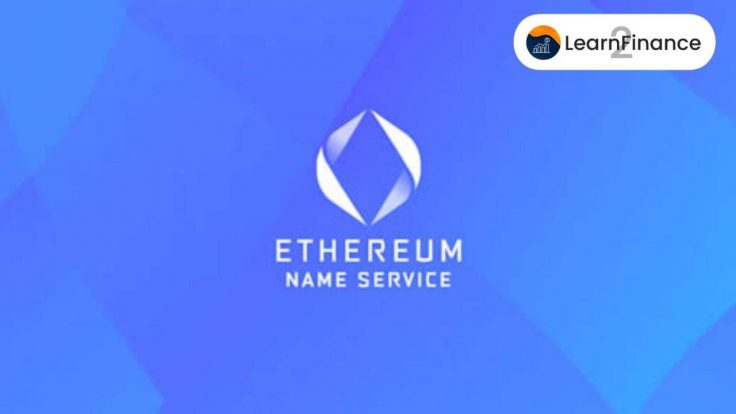The Ethereum Name Service (ENS) is a DNS-like service. However, it provides a safe and decentralised method of managing website domains—as well as sending ETH and ERC20 tokens.
The Ethereum Name Service (ENS) functions similarly to the internet’s DNS system, assisting users in finding websites by using names rather than numbers.
ENS is not intended to replace DNS, but rather to complement it.
To visit a website in the early days of the internet, you had to punch in the IP address, a string of numbers that was difficult to remember and practically impossible to predict. Then came human-readable names, which made it easier for regular people to navigate the internet. That change transformed 104.26.3.128 into Decrypt.co!
Cryptocurrency is still in its IP address phase: Long, difficult-to-remember addresses are required for users to reach the pages they desire. This is where the Ethereum Name Service enters the picture. It aspires to make using cryptocurrency as simple as accessing the web.
We’ll go through how it works, where it came from, and how to get an emoji domain name.
What exactly is Ethereum Name Service (ENS)?
The Ethereum Name Service (ENS) is a search engine. It connects data to a person’s name. It is not an Ethereum-only naming service; rather, it is an Ethereum-based naming service. It provides a safe and decentralised method of addressing resources with human-readable names. It is a completely decentralised domain-name service that allows anybody to purchase and administer domains. That is, instead of “8e866f012fb8fb…”, you may transfer ETH or ERC20 tokens to “realsatoshi.eth.”
Who runs the ENS?
The Ethereum Foundation’s Nick Johnson and Alex Van de Sande lead the early development of the ENS.
The initiative distributed ENS tokens to service users in November 2021 and formed a decentralised autonomous organisation, or DAO, to oversee it. (True Names Limited is the legal entity linked to the DAO.) ENS token holders use their assets in the same way that corporate shareholders do; they may make decisions regarding pricing, protocol updates, and how money are managed in the treasury.
The addition of ENS tokens has the additional benefit of shifting the project’s funding mechanism away from grants. On cryptocurrency exchanges, ENS tokens may be exchanged for US dollars and other cryptocurrencies, providing a financial lifeline to the project’s creators.
What makes it so unique?
The ENS is based on Ethereum’s smart contracts, which make it more secure, private, and resistant to censorship than the internet’s Domain Name Service (DNS). The ENS team views internet-naming infrastructure as a critical component that should be open, decentralised, community-driven, and non-profit. Technically, the ENS can utilise the current Ethereum environment, which means it is extremely programmable and can connect with other smart contracts in ways other than naming.
What else is distinct?
Unlike some of its rivals, the ENS does not want to replace DNS. The ENS prioritises distributed, trustworthy name resolution for Web3 resources such as blockchain addresses and distributed content. Namecoin, Blockstack, and Handshake, on the other hand, are attempting to replace DNS.
Within the ENS
ENS is made up of two smart contracts behind the hood. The ENS registry stores all domains and subdomains, as well as the owner’s information and a connection to the Resolver, which is another smart contract that performs name-to-address conversions and vice versa.
ENS operates similarly to the Internet’s DNS in that it features a hierarchical system that gives the domain owner complete control for all subdomains. So wallet.realsatoshi.eth and email.realsatoshi.eth may be created.
How to Register an ENS Domain
Using an Ethereum wallet like as MetaMask, you may search for available domain names at manager.ens.domains. Once you’ve found your domain, the system will lead you through the registration process, which will need two wallet confirmations. You’ll also have to decide how many years you wish to register a domain for, with rent of $5.00 each year (paid in ETH). As the domain owner, you may now specify the addresses or information you wish that name to connect to, as well as any subdomains.
What may ENS be used for?
Replace your lengthy, unreadable Ethereum address with a nice, memorable ENS address like realsatoshi.eth. This allows you to receive crypto assets and insert your ENS address into Ethereum dapps without having to copy and paste the full public address.
Apart from that, the decentralised web is being constructed on the collaboration of ENS and the file storage system IPFS. A good place to start is almonit.eth, which has a directory of decentralised websites. You can visit this site as written with MetaMask enabled, or you can add.link to decentralised websites and access them without MetaMask or special browsers owing to their efforts in bridging Web3 and the internet’s DNS.
Check out more Crypto Projects
What else are you capable of?
ENS is more than just.eth. In 2021, ENS enabled sites with any of the more than 1,300 top-level domain names, such as.com,.org, or.edu, to connect directly with ENS. As a result, if you own realsatoshi.org, you can link it directly to realsatoshi.eth, allowing users to read information while also sending money to the same location.








